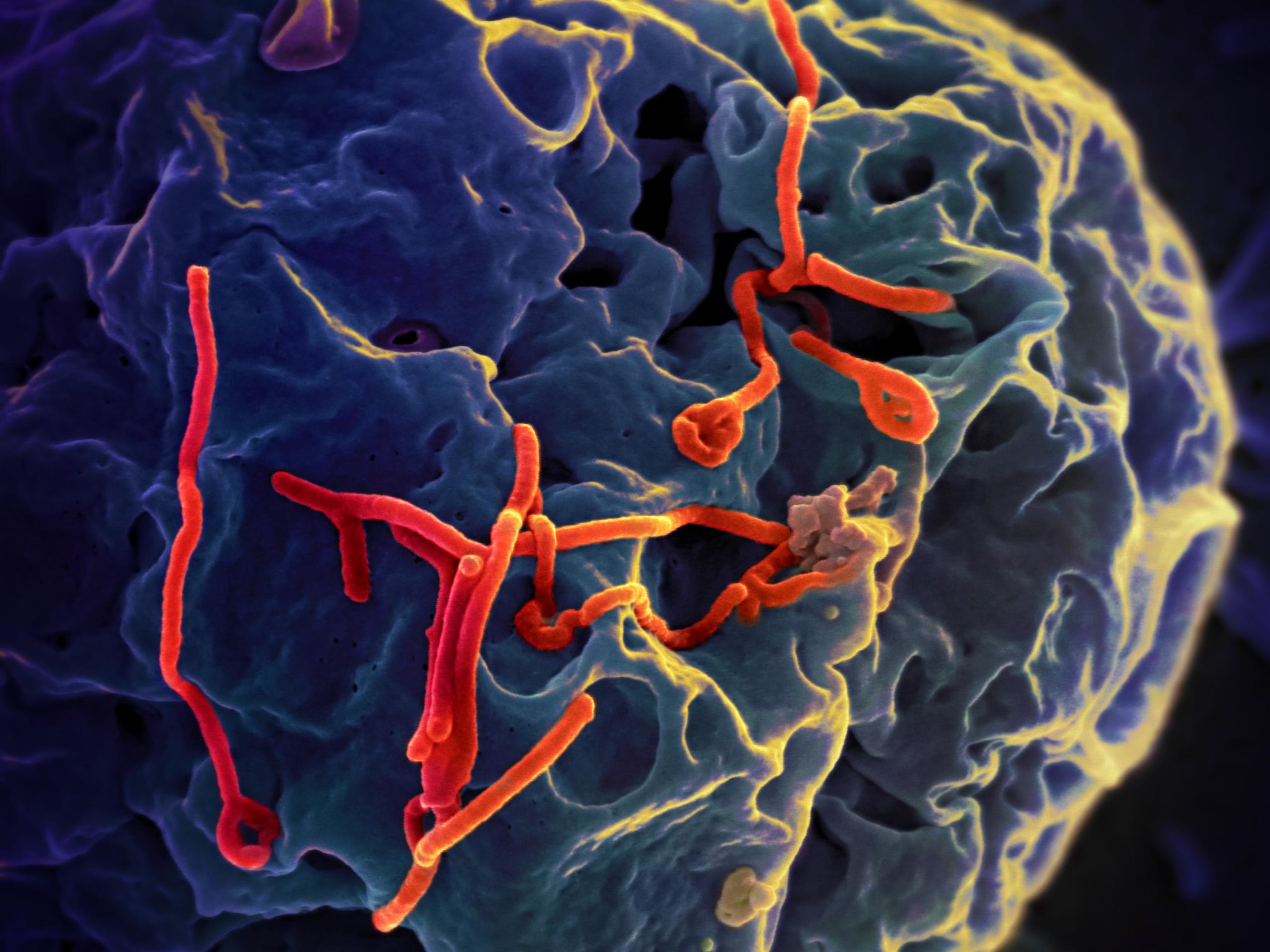Source: Scanning electron micrograph of Ebola virus budding from the surface of a Vero cell (African green monkey kidney epithelial cell line. Credit _NIAID
Learn more about the Ebola virus and the dangers it poses. Understand how its spread was controlled and its impact minimized as much as possible.
Despite the advances in technology and science, one thing we still don’t have any control over is the outbreak of new viruses. The COVID pandemic proved to be one of the most deadly and well-known outbreaks till date because of its impact on nearly every other nation in the world. But was it the deadliest one? History tells us otherwise.
One of the contenders for the deadliest viruses ever is the Ebola virus which is also a viral illness. This virus was controlled much better than the Corona Virus and is probably not known as much. But the symptoms and death toll it entailed are no joke. Even now, a simple mistake or carelessness on the safety official’s part can shove the whole world into another deadly pandemic.
The Virus
The Ebola Virus Disease (EVD) is spread by the Ebola Virus (EBOV) and probably started out from a zoonotic transmission. From here, it started spreading through direct contact with bodily fluids, skins of patients who had EVD, or blood. One key difference between EBOV and COVID-19 is that the former hasn’t shown any signs of spreading through airborne pathways, water, or even, food. The latter spreads at a faster speed and can take the air, water, or food route to infect other people.
This virus is quite potent and can easily survive in liquid and/or dried materials both for a number of days. Once infected, the virus takes about 2 to 21 days to incubate after which the first symptoms are observed. The disease begins with a fever which doesn’t subside and is followed by gastrointestinal symptoms. In case the patient has got the virus in their blood, they will also, most likely, suffer from a complex multiple organ dysfunction syndrome. Patients who don’t have as much virus in their bloods don’t suffer from severe symptoms and hence, form an immunity against the virus. They, then, undergo the resolution phase.
Recovery can be complicated if the virus stays a bit too long in the patient’s blood though. Additional symptoms include anorexia, headache, arthralgia, malaise, myalgia, and rash which occur along with the fever during the early infection period. Some patients also complain about internal and/or external bleeding.
Outbreaks

Source: _Wikimedia_Ebola_Outbreak_Map_(ongoing)_By Раціональне анархіст – Own work, CC BY-SA 3.0
The first EVD outbreaks were reported from regions in Central Africa which were situated near the tropical rainforests there. This was in 1976 and in what we know today as the Democratic Republic of Congo. Some 318 cases were reported and the fatality rate was 88%- 280 out of 381 people died because of the virus. Sudan also reported the same where the fatality rate was 53% and 151 out of the total 284 cases were reported dead. There are new outbreaks because of this virus every now and then.
The largest EVD outbreak till date took place in West Africa in the regions of Guinea, Liberia, and Sierra Leone. Some 28,610 cases were reported out of which 11,308 deaths were confirmed. Other than local people, many US health officials who had been working there also contracted the disease and had to return to the states to get treated. This happened between the years 2014 to 2016 and was the worst known epidemic till date.
After this, the epidemic died down a little and resurged in 2018, 2020, 2021, and 2022 but still not as deadly.
Solutions
Prior to 2018, a solution to the EBOV was unthinkable and not produced. Supportive care and treatment of specific symptoms was the only way to go.
But a multi-drug control trial was conducted during the 2018-2020 outbreak in the Democratic Republic of Congo. This was done to check how effective and safe the drug was. By late 2020, two antibodies- Inmazeb and Ebanga- were approved for the treatment of the virus infection. The Ervebo vaccine was also checked and approved by the US Food and Drug Administration in December 2020.
In Europe, the Medicines Agency also granted marketing authorization for vaccines. A 2-component vaccine called Zabdeno-and-Mvabea is given to the patient and is delivered in two doses. Zabdeno is given first and later, Mvabea. The doses are delivered in an 8-week period in between and is hence, not suitable for emergency response.
Challenges
Studies have shown that there are no set demographical risk factors for infection- sex, age, and ethnicity doesn’t matter when it comes to infection. But there are some exceptions to this result.
Women who are care givers are more prone to getting infected because of their close proximity with other people. As a result, the EVD incidence rate increases and reaches a peak at the age of 35-44 years.
Children are not that prone to the disease, and also have shorted incubation periods and disease courses. But they are at higher risk of dying as compared to the older populations. Children less than the age of 5 years old are at highest risk. Newborn babies of infected mothers rarely survive and the transmission of EVD from the infected mother to their fetus or embryo occurs very frequently. Either they suffer a miscarriage or a stillbirth.
Any deadly epidemics have not been reported ever since 2022 since medical professionals have been trying really hard to rein in any dangers. But like mentioned earlier, even a single miscalculation on their part can lead to a new pandemic.
Resources
- Suresh Rewar, & Dashrath Mirdha. (2015). Transmission of Ebola Virus Disease: An Overview. Annals of Global Health, 80(6), 444–444. https://doi.org/10.1016/j.aogh.2015.02.005
- Jacob, S. T., Crozier, I., Fischer, W. A., Hewlett, A., Kraft, C. S., de, M.-A., Soka, M. J., Wahl, V., Griffiths, A., Bollinger, L., & Kuhn, J. H. (2020). Ebola virus disease. Nature Reviews Disease Primers, 6(1). https://doi.org/10.1038/s41572-020-0147-3
- World. (2019, June 18). Ebola virus disease. Who.int; World Health Organization: WHO. https://www.who.int/health-topics/ebola/#tab=tab_3
- CDC. (2024). Outbreak History. Ebola. https://www.cdc.gov/ebola/outbreaks/index.html

















